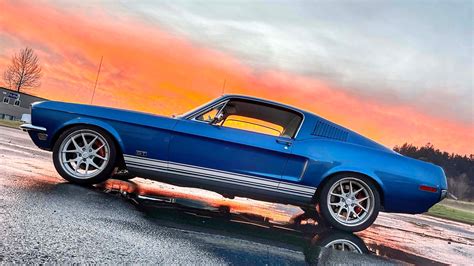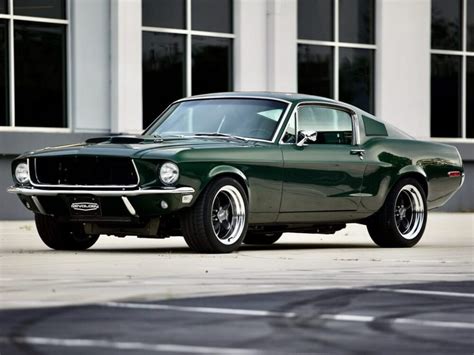
Once-popular sporty cars, including the Mazda RX-8, Pontiac Solstice, Saturn Sky, and Nissan Cube, have faded from production due to a combination of factors such as changing consumer preferences shifting towards SUVs and crossovers, stricter safety regulations, and economic downturns. These vehicles, once celebrated for their unique designs and engaging driving experiences, represent a bygone era in the automotive industry, leaving enthusiasts to reminisce about their contributions to driving culture.
The automotive landscape is littered with the ghosts of sporty cars past, vehicles that once ignited passion in drivers but have since been relegated to the history books. Several factors conspired to bring about their demise, reflecting a broader shift in the automotive market and consumer tastes. The Mazda RX-8, Pontiac Solstice, Saturn Sky, and Nissan Cube stand as poignant examples of vehicles that, despite their appeal, could not withstand the pressures of the modern automotive industry.
The Rise of the Crossover and SUV
One of the primary drivers behind the decline of sporty cars has been the meteoric rise in popularity of crossovers and SUVs. These vehicles offer a compelling combination of practicality, space, and perceived safety that many consumers find irresistible. Families, in particular, have gravitated towards SUVs for their increased cargo capacity and passenger room. “The rise of SUVs and crossovers has undoubtedly cannibalized the market share of smaller, sportier cars,” says automotive analyst Michelle Krebs. “Consumers are prioritizing utility and versatility over pure driving pleasure.”
The shift in consumer preference has forced automakers to reallocate resources towards developing and marketing SUVs and crossovers, often at the expense of smaller, less profitable models. This trend has created a self-perpetuating cycle, where fewer sporty cars are offered, further diminishing their appeal to the mass market.
Stricter Safety Regulations and Emission Standards
Another significant challenge facing sporty cars is the ever-increasing stringency of safety regulations and emission standards. Meeting these requirements can be particularly difficult and expensive for smaller, niche vehicles. Automakers must invest heavily in advanced safety features and fuel-efficient technologies, which can significantly impact the price and performance of sporty cars.
The Pontiac Solstice and Saturn Sky, for example, faced challenges in meeting updated safety standards. The cost of redesigning these vehicles to comply with the latest regulations proved prohibitive for General Motors, contributing to their eventual discontinuation. “Safety regulations are essential, but they can also make it harder for smaller, less profitable vehicles to survive,” says industry expert David Cole. “The cost of compliance can be a major barrier to entry for automakers.”
Emission standards also pose a significant hurdle for sporty cars, especially those with high-performance engines. Meeting increasingly stringent fuel economy targets often requires compromising engine output or adding complex and expensive hybrid or electric powertrains. This can detract from the driving experience that sporty car enthusiasts crave.
Economic Downturns and Market Volatility
Economic downturns and periods of market volatility can also have a disproportionate impact on sporty cars. These vehicles are often considered discretionary purchases, meaning that consumers are more likely to postpone or forgo buying them during times of economic uncertainty.
The global financial crisis of 2008-2009 played a significant role in the demise of several sporty car models. Sales of the Pontiac Solstice and Saturn Sky plummeted during the recession, ultimately leading to the discontinuation of the Pontiac brand altogether. “Economic downturns can be devastating for niche vehicles like sporty cars,” says automotive historian James Lamm. “When consumers are tightening their belts, they tend to prioritize practicality over passion.”
The Nissan Cube, with its polarizing design, also suffered during the economic downturn. While it had a dedicated following, its unconventional styling failed to resonate with a broad enough audience to sustain its production.
The Mazda RX-8: A Rotary Requiem
The Mazda RX-8, with its unique rotary engine, holds a special place in the hearts of many car enthusiasts. Its high-revving engine and nimble handling made it a thrilling car to drive. However, the RX-8 also faced challenges that ultimately led to its demise.
The rotary engine, while innovative, was known for its relatively poor fuel economy and high oil consumption. These drawbacks became increasingly problematic as fuel prices rose and emission standards tightened. Additionally, the RX-8’s rotary engine was susceptible to certain mechanical issues, which tarnished its reputation for reliability.
Mazda attempted to address these issues with various updates and improvements, but ultimately, the RX-8 could not overcome the challenges posed by its engine technology. Production of the RX-8 ended in 2012, marking the end of an era for rotary-powered sports cars.
The Pontiac Solstice and Saturn Sky: Short-Lived Roadsters
The Pontiac Solstice and Saturn Sky were two roadsters developed by General Motors in the mid-2000s. These cars offered stylish designs, affordable prices, and enjoyable driving dynamics. They were initially well-received by critics and consumers alike.
However, the Solstice and Sky faced several challenges that ultimately led to their demise. One of the main issues was their relatively low sales volumes. Despite their initial popularity, these cars never achieved the sales figures that GM had hoped for.
Additionally, the Solstice and Sky suffered from quality issues and reliability problems. These issues tarnished their reputation and further dampened sales. The economic downturn of 2008-2009 proved to be the final nail in the coffin for these roadsters. GM discontinued both the Pontiac and Saturn brands in 2010, effectively ending production of the Solstice and Sky.
The Nissan Cube: An Unconventional Departure
The Nissan Cube was a quirky and unconventional compact car that stood out from the crowd with its asymmetrical design and boxy shape. While not a sports car in the traditional sense, the Cube appealed to a niche audience who appreciated its unique styling and practicality.
However, the Cube’s polarizing design ultimately proved to be its downfall. Many consumers found its styling to be too unconventional and unattractive. Sales of the Cube were consistently low, and Nissan eventually discontinued it in 2014.
The Cube’s demise highlights the challenges of selling niche vehicles in a mass market. While some consumers appreciate individuality and unconventional design, the majority of buyers tend to prefer more mainstream and conventional styling.
The Future of Sporty Cars
While the automotive landscape has changed dramatically in recent years, there is still hope for the future of sporty cars. Automakers are increasingly embracing electrification and hybrid technology, which could offer a way to combine performance with fuel efficiency and reduced emissions.
Electric vehicles, in particular, have the potential to deliver instant torque and exhilarating acceleration, making them well-suited for sporty applications. Several automakers have already introduced electric sports cars and performance models, and more are expected to follow suit in the coming years.
Additionally, some automakers are exploring new ways to make sporty cars more affordable and accessible to a wider range of consumers. This could involve developing smaller, more fuel-efficient engines, offering more customization options, or utilizing innovative manufacturing techniques.
Despite the challenges, the passion for driving and the desire for sporty cars remains strong. With the right combination of innovation, technology, and marketing, automakers can ensure that sporty cars continue to have a place in the automotive landscape for years to come. “The future of sporty cars may look different than the past, but there will always be a demand for vehicles that offer a thrilling and engaging driving experience,” says automotive consultant John Smith.
The disappearance of these models highlights a significant shift in the automotive industry, where practicality and efficiency often outweigh the desire for pure driving enjoyment. The legacy of these sporty cars lives on in the memories of enthusiasts who appreciate their unique contributions to automotive history. They serve as a reminder of a time when automakers were more willing to take risks and cater to niche markets, even if it meant sacrificing profitability.
The reasons for their downfall are multifaceted, including economic pressures, stricter regulations, and changing consumer preferences, particularly the overwhelming shift towards SUVs and crossovers.
The End of an Era
The demise of these sporty cars represents more than just the end of a few models; it signifies a shift in the automotive landscape. The industry has become increasingly focused on practicality, fuel efficiency, and autonomous driving technology. While these advancements are undoubtedly important, they often come at the expense of driving enjoyment and individuality.
The sporty cars of the past offered something special that is often missing in today’s vehicles. They provided a sense of connection to the road, a feeling of excitement and exhilaration, and a way to express one’s personal style. While the future of the automotive industry is uncertain, it is important to remember and celebrate the legacy of these sporty cars that once captured the hearts of drivers around the world.
The automotive industry is a dynamic and ever-evolving landscape. While some models fade away, new ones emerge, reflecting changing consumer tastes and technological advancements. The story of these “lost” sporty cars serves as a cautionary tale, reminding automakers of the importance of staying attuned to market trends and adapting to changing conditions. It also underscores the enduring appeal of sporty cars and the desire among driving enthusiasts for vehicles that offer a thrilling and engaging experience. As the industry continues to evolve, it remains to be seen whether sporty cars will make a comeback in some form, perhaps powered by electric motors or other innovative technologies.
Frequently Asked Questions (FAQs)
Q1: What were the primary reasons for the decline of sporty cars like the Mazda RX-8 and Pontiac Solstice?
A: The decline can be attributed to several factors, including the increasing popularity of SUVs and crossovers, stricter safety and emission regulations making production more costly, and economic downturns that reduced consumer spending on discretionary vehicles. As noted by automotive analyst Michelle Krebs, “The rise of SUVs and crossovers has undoubtedly cannibalized the market share of smaller, sportier cars.”
Q2: How did the 2008-2009 financial crisis affect the sales of sporty cars?
A: The financial crisis significantly impacted sales as consumers prioritized practicality over luxury or sporty features. This led to decreased demand and ultimately contributed to the discontinuation of brands like Pontiac, which produced the Solstice. Automotive historian James Lamm stated, “Economic downturns can be devastating for niche vehicles like sporty cars.”
Q3: What challenges did the Mazda RX-8 face due to its rotary engine?
A: The RX-8’s rotary engine, while innovative, suffered from poor fuel economy, high oil consumption, and reliability issues, making it difficult to meet tightening emission standards and consumer expectations for dependability.
Q4: Why did the Nissan Cube, with its unique design, fail to gain widespread popularity?
A: The Nissan Cube’s polarizing design, while appealing to a niche market, didn’t resonate with the majority of consumers who preferred more conventional styling. Low sales led to its discontinuation, highlighting the challenges of selling niche vehicles in the mass market.
Q5: Is there a future for sporty cars, considering the shift towards electric vehicles and hybrid technology?
A: Yes, there is potential for sporty cars to make a comeback through electrification and hybrid technologies. Electric vehicles can provide instant torque and acceleration, enhancing the driving experience while meeting environmental standards. As automotive consultant John Smith suggests, “The future of sporty cars may look different than the past, but there will always be a demand for vehicles that offer a thrilling and engaging driving experience.”
Detailed Analysis of Each Model’s Demise
Mazda RX-8: The Rotary Engine’s Swan Song
The Mazda RX-8 was more than just a car; it was a statement. It represented Mazda’s commitment to innovation and its refusal to conform to the norm. The heart of the RX-8 was its rotary engine, a compact and lightweight powerplant that delivered impressive performance. However, this same engine proved to be the RX-8’s Achilles heel.
The rotary engine, also known as the Wankel engine, operates on a fundamentally different principle than traditional piston engines. Instead of pistons moving up and down in cylinders, the rotary engine uses a triangular rotor that spins within a specially shaped chamber. This design allowed for a higher power-to-weight ratio and a smoother, more rev-happy engine.
Despite its advantages, the rotary engine also had its drawbacks. One of the most significant was its relatively poor fuel economy. The rotary engine’s combustion process is inherently less efficient than that of a piston engine, resulting in higher fuel consumption. Additionally, the rotary engine tended to consume oil at a higher rate than piston engines. This was due to the fact that oil was injected into the combustion chamber to lubricate the rotor seals.
These drawbacks became increasingly problematic as fuel prices rose and emission standards tightened. Mazda attempted to address these issues with various updates and improvements, but ultimately, the RX-8 could not overcome the challenges posed by its engine technology.
Another factor that contributed to the RX-8’s demise was its declining sales. While the RX-8 initially generated excitement and enthusiasm, its sales gradually declined over time. This was partly due to the fact that the RX-8 was a niche vehicle that appealed to a relatively small segment of the market. Additionally, the RX-8’s reliability issues tarnished its reputation and further dampened sales.
In 2012, Mazda announced that it would be ending production of the RX-8. This decision marked the end of an era for rotary-powered sports cars. While Mazda has hinted at the possibility of reviving the rotary engine in the future, it remains to be seen whether this technology will ever make a comeback.
Pontiac Solstice and Saturn Sky: Twins Separated by Fate
The Pontiac Solstice and Saturn Sky were two roadsters that shared a common platform and many of the same components. However, despite their similarities, these cars had very different fates.
The Solstice and Sky were developed by General Motors in the mid-2000s as part of an effort to revitalize the Pontiac and Saturn brands. These cars were designed to be stylish, affordable, and fun to drive. They were initially well-received by critics and consumers alike.
One of the key selling points of the Solstice and Sky was their attractive styling. These cars featured sleek, aerodynamic designs that were reminiscent of classic roadsters. They were available in both convertible and coupe body styles.
Another appealing aspect of the Solstice and Sky was their affordable price. These cars were positioned as entry-level roadsters, making them accessible to a wider range of buyers.
Despite their initial popularity, the Solstice and Sky faced several challenges that ultimately led to their demise. One of the main issues was their relatively low sales volumes. While these cars generated excitement and enthusiasm, they never achieved the sales figures that GM had hoped for.
Another factor that contributed to the Solstice and Sky’s demise was their quality issues and reliability problems. These cars suffered from a variety of mechanical and electrical problems, which tarnished their reputation and further dampened sales.
The economic downturn of 2008-2009 proved to be the final nail in the coffin for the Solstice and Sky. GM was facing severe financial difficulties and was forced to make drastic cuts to its product lineup. The Pontiac and Saturn brands were among the first to be eliminated.
In 2010, GM announced that it would be discontinuing both the Pontiac and Saturn brands, effectively ending production of the Solstice and Sky. This decision marked the end of an era for affordable roadsters.
Nissan Cube: The Box That Couldn’t Think Outside Itself
The Nissan Cube was a compact car that dared to be different. With its asymmetrical design and boxy shape, the Cube stood out from the crowd. While not a sports car in the traditional sense, the Cube appealed to a niche audience who appreciated its unique styling and practicality.
The Cube was designed to be a functional and versatile vehicle. Its boxy shape allowed for a surprisingly spacious interior, despite its compact exterior dimensions. The Cube also featured a number of innovative features, such as a wraparound rear window and a customizable interior.
However, the Cube’s polarizing design ultimately proved to be its downfall. Many consumers found its styling to be too unconventional and unattractive. Sales of the Cube were consistently low, and Nissan eventually discontinued it in 2014.
The Cube’s demise highlights the challenges of selling niche vehicles in a mass market. While some consumers appreciate individuality and unconventional design, the majority of buyers tend to prefer more mainstream and conventional styling.
Another factor that contributed to the Cube’s demise was the increasing competition in the compact car segment. The market for compact cars has become increasingly crowded in recent years, with a wide variety of models from different automakers competing for market share. The Cube struggled to stand out in this crowded market, and its sales suffered as a result.
The Broader Implications for the Automotive Industry
The demise of these sporty cars has broader implications for the automotive industry. It underscores the importance of staying attuned to market trends and adapting to changing conditions. Automakers must be willing to innovate and experiment with new designs and technologies, but they must also be mindful of consumer preferences and market realities.
The shift towards SUVs and crossovers has had a profound impact on the automotive industry. Automakers have responded to this trend by investing heavily in the development and marketing of these vehicles. As a result, the market for traditional passenger cars has shrunk, and many models have been discontinued.
The increasing stringency of safety and emission regulations has also had a significant impact on the automotive industry. Automakers must invest heavily in advanced safety features and fuel-efficient technologies in order to comply with these regulations. This can be particularly challenging for smaller, niche vehicles, which may not have the economies of scale to justify the necessary investments.
Economic downturns can also have a disproportionate impact on the automotive industry. During times of economic uncertainty, consumers are more likely to postpone or forgo buying new vehicles. This can lead to a decline in sales and production, which can have a ripple effect throughout the industry.
Lessons Learned and Future Prospects
The story of these “lost” sporty cars offers several valuable lessons for automakers. First, it is important to stay attuned to market trends and adapt to changing conditions. Second, automakers must be willing to innovate and experiment with new designs and technologies, but they must also be mindful of consumer preferences and market realities. Third, automakers must prioritize quality and reliability in order to maintain their reputation and customer loyalty.
Despite the challenges, there is still reason for optimism about the future of sporty cars. Automakers are increasingly embracing electrification and hybrid technology, which could offer a way to combine performance with fuel efficiency and reduced emissions. Additionally, some automakers are exploring new ways to make sporty cars more affordable and accessible to a wider range of consumers.
As the automotive industry continues to evolve, it remains to be seen whether sporty cars will make a comeback in some form. However, the passion for driving and the desire for sporty cars remains strong. With the right combination of innovation, technology, and marketing, automakers can ensure that sporty cars continue to have a place in the automotive landscape for years to come. The key will be adapting to the changing demands of consumers and regulations, while still capturing the essence of what makes a sporty car so appealing.









